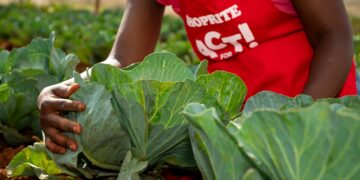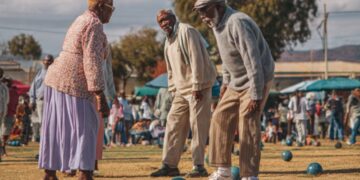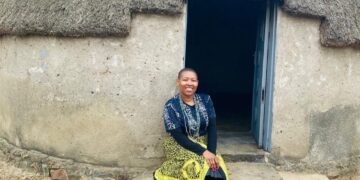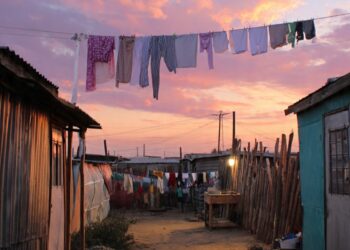As South Africa marks Women’s Month this August, health experts are warning of a growing but overlooked threat. Diabetes has become the leading cause of death among South African women – surpassing heart disease, cancer and HIV – and urgent action is needed to reverse the trend.
Despite receiving far less public attention, diabetes has steadily climbed the list of fatal diseases affecting women.
“We’re facing a public health crisis,” says Ingrid Singels, Marketing Manager for Pharma Dynamics’ Scientific Division. “Worldwide, diabetes affects men and women equally, but in South Africa, we see significantly more women living with diabetes than men, and they also face more severe complications. Yet, diabetes remains underdiagnosed and undertreated.”
Understanding the risk factorsThe rise in diabetes among South African women is driven by a complex mix of genetic, behavioural and environmental factors. While genetics and family history can increase susceptibility, lifestyle-related factors, such as poor diet, physical inactivity, obesity, smoking and chronic stress play a much larger role in type 2 diabetes.
Other contributors include age, hormonal changes (such as menopause or gestational diabetes), waist circumference and co-existing conditions like high blood pressure and high cholesterol. In South Africa, the social determinants of health, namely living in/ close to a city and unemployment, also play a role. Together, these factors set the stage for the development of insulin resistance and long-term blood sugar imbalances.
An epidemic fuelled by obesity One of the biggest risk factors contributing to the diabetes epidemic among South African women is obesity. According to the South African Demographic and Health Survey (SADHS), nearly 68% of women in the country are either overweight or obese. Excess body fat, especially around the abdomen, significantly increases the risk of type 2 diabetes by promoting insulin resistance.
“In South Africa, there is a social perception that larger body sizes in women are associated with beauty, health and wealth. While body positivity is important, it’s equally vital to recognise when excess weight poses a genuine risk to one’s health.” says Singels.
The role of socio-economic factors A woman’s risk of developing diabetes is influenced not only by personal lifestyle choices, but also by her environment and socio-economic circumstances. Research published in BMC Public Health (2023)1 highlights that women living in urban, low-income settings face significantly higher rates of diabetes. Contributing factors include limited access to nutritious food, inadequate recreational facilities and poor access to preventative healthcare – creating a cycle that’s difficult to break.
Supporting this, a 2023 study in KwaZulu-Natal published in PLOS ONE2 found that women in deprived urban communities bear a disproportionate share of the diabetes burden. Environmental and structural barriers, like crime, overcrowding, unsafe living conditions and affordable fast food – make healthy living significantly harder. Women also remain the primary caregivers for their families reducing the amount of personal time they have for physical activity.
“These realities show that for many South African women, managing or preventing diabetes isn’t just about making healthier choices, it’s also about addressing the structural and economic challenges that limit those choices in the first place,” highlights Singels.
Communities at higher risk In South Africa, diabetes- related deaths are statistically higher among Indian and Coloured populations compared to Black or White groups. This is largely due to a mix of genetic predisposition, dietary patterns and socio-economic factors.
Why women suffer more While diabetes affects both genders, women face unique challenges:
• Hormonal changes during pregnancy and menopause can make blood glucose control more difficult.
• Gestational diabetes, which develops during pregnancy, increases the risk of type 2 diabetes later in life for both mother and child.
• Women are also more likely to suffer from depression, which is linked to poor diabetes self-management and worsened outcomes.
“Many women in our country are caregivers who may tend to put everyone else’s needs before their own. They may ignore warning signs or skip check-ups, which may lead to late diagnoses when complications have already set in.”
Symptoms often go unnoticed Diabetes symptoms, such as frequent urination, fatigue, blurred vision or increased thirst can be subtle and easily mistaken for stress or ageing. As a result, many people with diabetes in South Africa remain undiagnosed, which could lead to serious health consequences.
“We need widespread public health campaigns tailored to women,” says Singels. “Early screening, especially after 40 or during pregnancy, can save lives.”L What can be done?There is no cure for diabetes, but lifestyle interventions can prevent or delay its onset:
• Regular exercise (at least 150 minutes per week)
• Weight loss (even a 5–10% reduction can make a difference) • Balanced and healthy low-GI diet (try these recipes from Cooking from the Heart)
• Routine screening and monitoring
“Women have the power to change the health trajectory of their families and communities. If we support them with the right information and access to care, we can reverse the tide.
“Diabetes doesn’t need to be a death sentence. With early detection, lifestyle changes and ongoing support, it can be managed. The first step is awareness – knowing your risk, recognising the symptoms and getting tested,” encourages Singels.
Pharma Dynamics
Soweto Sunrise News
































